Antioch Council majority votes down proposed police body and dash cam policies delaying implementation for another month or more
Thursday, July 15th, 2021
The type of AXON police body and car cameras purchased by the Antioch Police Department. Photos: AXON
Even though APD already has the body-cams and training was to begin next week
“a new era of transparency, accountability and safety to our community, as well as our officers” will have to wait.
Committee Chair Torres-Walker appointed to work with Chief Brooks, city attorney and city manager to revise policies
“I was disappointed in the vote that the cameras are not on the street immediately. We will continue to push to get them out soon.” – District 2 Councilman and Committee Member Mike Barbanica
By Allen Payton
The Antioch City Council met as the Police Oversight Standing Committee of the whole council Tuesday night, and voted 2-3 on approving proposed policies for use and operation of the police department’s new body and car dash cameras. According to Chief T Brooks, the equipment has been received and training of officers was to begin next week. Instead, that training and implementation of the camera use has now been postponed for at least a month or two, due to the need to revise the draft policies and then meet and confer with the Antioch Police Officers Association (APOA), after the council sent the policies back for corrections.
District 3 Councilwoman and committee vice chair Lori Ogorchock made the motion to approve the Antioch Police Department Body-Worn Camera and Mobile Video Audio Recorder policies and District 2 Councilman Mike Barbanica seconded the motion. But it failed when Mayor Lamar Thorpe, Mayor Pro Tem Monica Wilson and District 1 Councilwoman and committee chair Tamisha-Torres-Walker voted against it.
During the standing committee’s first meeting in May the only actions taken were to vote in Torres-Walker as chair of the committee and Ogorchock as vice chair on separate votes. Ogorchock was the only council member to vote against Torres-Walker as chair, and Torres-Walker was the only vote against Ogorchock as vice chair.
Neither the Herald, other local media nor most of the public were aware of this past Tuesday’s meeting, because there was no email announcing the standing committee meeting, as is usually done for council meetings. Plus, at their last regular meeting in June council members and the public were informed there would be no meetings in July. Instead, Tuesday night’s meeting agenda was merely posted on the city’s website. Furthermore, the meeting being shown on Comcast Cable Channel 24 at the same time was a repeat of a former council meeting.
However, some members of the public were aware of the meeting and offered public comment on the matter.
Cameras Approved Earlier This Year
The policies were developed in response to the unanimous votes by the city council on February 26 and on March 9 to support purchasing the body-worn and police car dash cameras for use by the department for the first time in its history. The action was part of the police reform measures the mayor and council members approved earlier this year. At the time there was a sense of urgency for implementing their use due to two incidents in which Antioch residents died following interactions with police last December and this February. (See related articles, here and here)
But the council majority refused to adopt the proposed policies, now and make corrections to them, later sending them back to the APD for revision before returning to the next meeting of the standing committee. That and all future meetings of the council committee of the whole are now scheduled to be held immediately prior to the second council meetings of the month, which are held on the fourth Tuesdays. So, the next time the council members will deal with the matter will be on July 27th. They can then vote to make a recommendation on the revised proposed policy to themselves as the city council, and the soonest the council can adopt the policy, unless a special meeting is called or the council votes to place the matter as an urgency item on the July 27th agenda, is during their first regular meeting in August.
Proposed Policies
After multiple police department staff members worked on the proposed policies during numerous meetings, gathering input from other agencies and organizations, including consulting the ACLU policies, and obtaining support for them following a meet and confer with the APOA, Chief Brooks presented them to the standing committee. (See presentation, here)
“Officers have already been assigned their individual cameras,” Brooks said. “Axon…is scheduled to conduct in-house departmental training…beginning next week. Upon completion of that training and approval of the body-worn camera policy we are prepared to immediately deploy our officers into the field equipped with this technology, bringing a new era of transparency, accountability and safety to our community, as well as our officers.”
However, the dash cams aren’t expected to arrive until next month, he shared.
According to Brooks’ written staff report for the agenda item, “During the Regular Council Meeting on March 9, 2021, the Antioch City Council approved the purchase of Axon BWC (Body-Worn Cameras) and MVAR (Mobile Video/Audio Recorder – aka police car dash cam) technology for use by the Antioch Police Department. In a subsequent Council Meeting on April 13, 2021, the City Council established the Police Reform Standing Committee (later renamed the Police Oversight Standing Committee). The standing committee’s responsibilities span several areas which include reviewing Antioch Police Department (APD) policies, providing community updates, and soliciting community input on APD policies.
As part of the implementation process for the new BWC and MVAR technologies, the Police Department established a BWC/MVAR Policy [and Implementation] Committee of Sworn Officers and Supervisors along with Records and Dispatch staff. This group met on a regular basis over a period several months and spent hundreds of staff hours researching existing BWC and MVAR policies from across the state. In addition, this committee examined federal and state laws which guide the use of this technology along with reports on industry best practices.
The Police Department contracts with a company called Lexipol which designs (web based) policy manuals and training for law enforcement agencies all over the United States. Lexipol further provides a full library of customizable, state-specific law enforcement policies that are updated in response to new state and federal laws and court decisions. The (attached) BWC and MVAR policies were drafted in Lexipol and are consistent with federal and state guidance as well as industry best practices.”
Public Comments
About 30 members of the public spoke on the item. (See 19:30 through 36:30 mark of meeting video)
Council Concerns
One of the sticking points with some of the council members was on policy “423.5.1 WHEN TO ACTIVATE – During their shift, officers shall make every reasonable effort to activate the BWC prior to initiating investigations and enforcement activity, whether self-initiated or in response to a dispatched call.
Officers shall make every reasonable effort to record non-enforcement contacts should they become confrontational, assaultive or enforcement oriented. In addition to the required conditions, personnel may activate the system any time they feel its use would be appropriate and/or valuable to document an incident.
Also, officers shall not be required to activate or deactivate their BWC based solely on the requests or demands of a citizen, but rather rely on their training and this policy to direct their use of the BWC.
While there may be circumstances in which the BWC cannot be activated immediately, the goal is to capture interactions with the public while providing police services. In the event an officer decides not to turn on their BWC based on the belief that their safety or the safety of the public is in jeopardy, the onus of providing evidence of such fact is the employee’s responsibility. Any failure to activate the BWC in a circumstance in which the objective facts dictate otherwise, may be cause for discipline”
Another issue policy “423.8 STORAGE AND RETENTION OF RECORDINGS – All BWC recordings will be stored via cloud storage, currently Evidence.com. The cloud storage service shall comply with Criminal Justice Information Systems (CJIS) requirements for law enforcement digital evidence storage. Recordings of the following should be retained for a minimum of two years (Penal Code§ 832.18):
(a) Incidents involving use of force by an officer.
(b) Officer-involved shootings or any other Law Enforcement Involved Fatal Incident (LEIFI)
(c) Incidents that lead to the detention or arrest of an individual
(d) Recordings relevant to a formal or informal complaint against an officer or the Antioch Police Department Recordings containing evidence that may be relevant to a criminal prosecution should be retained for any additional period required by law for other evidence relevant to a criminal prosecution (Penal Code § 832.18).
BWC recordings relating to incidents where criminal charges are filed shall be retained for at least one year after whichever of these events occurs last:
(a) the matter is resolved; or,
(b) the defendant has been released from custody; or,
(c) the appeal is final.
(d) The BWC recording may be destroyed earlier than this if the district attorney or other prosecuting agency, all defendants and the City Attorney are notified and given time to object prior to any destruction of a BWC recording related to a criminal incident.
All other recordings should be retained for a period consistent with the requirements of the organization’s records retention schedule but, in no event, for a period less than 180 days. Records or logs of access and deletion of recordings should be retained permanently (Penal Code § 832.18).
Council Discussion
“The reality of this is, the public has asked us to create transparency and I believe by having essentially, every enforcement stop video and audio taped, as well as every time the overhead lights go on, they automatically turn on, and every time an officer gets out of the car, they automatically activate their body camera,” Barbanica said. “I think it’s pretty straight forward.”
“Also…if a police officer draws his or her firearm it automatically activates, as well and then eventually if we get to a point where we get the new tasers, if a taser is drawn from a holster it will activate, as well,” Brooks added. “But with our current tasers that technology is not available. But it is for the firearms.”
“Along those lines, Chief, if one officer forgets to activate, draws their firearm or another officer draws their firearm, will it activate the body-worn camera of everybody in proximity?” Barbanica asked.
“That is correct,” Brooks responded.
Wilson said “there are certain areas in the report that were kind of vague and I wanted to tighten up the verbiage.”
“I would really like to change ‘reasonable effort’ to shall or must, because reasonable effort is really subjective,” she said.
“Also, the discipline it really didn’t go into detail. Is that like a finger wagging…or sitting down with that officer, or probation or termination?” Wilson asked.
“That vagueness is necessary, just because if there’s a violation there could be a number of different varying circumstances. It could depend on the tenure of the officer, it could be if the deactivation was…accidental or if it’s malicious. It could be an officer who has had disciplinary problems it could be someone with
“That gives me the discretion to look at each situation and determine the level of discipline that should be,” he added.
“I just don’t want to leave it so open that we end up with a grey area and someone uses that grey area to not be terminated,” Wilson responded. “I really want to get this right…and don’t want to look back…and not take care of these loose ends.”
“What I’ll say to that is, if you look at any of our policies, none of them have a defined level of discipline,” Brooks stated. “I would caution us to be careful and recognize that would be unique to this policy, alone, because there could be mitigating circumstances.”
Thorpe spoke next saying,, “I tend to agree with Councilwoman Wilson on some of the vagueness. I don’t like the references to reasonable effort. You’re either doing this or you’re not. I was looking more for a shall.”
“The five of us are the policy makers and staff brings forward recommended policies and what we adopt will be our policies,” he continued. “When I hear the public say…the ACLU model, they want to know what protections are in there for them.”
“We can move forward with this initial policy and then we expand it and work in protections for the public…the accountability…and how officers will be responsible and make sure their body-cameras are activated,” Thorpe stated.
“I’m concerned about this phrase uniformed officers,” he said. “I thought we were giving a body cam to every sworn officer. There are officers doing enforcement when they’re not in their uniform.”
“The uniform could…include detectives using their…vests and duty belt,” Brooks explained. “What it’s not designed for is officers working undercover.”
“Oh, OK. Thank you for the clarity,” Thorpes responded.
“My preference is that we move forward, tonight…instead of prolonging this any longer…and if there is something we need to tighten up we can address that,” Barbanica said. “We can always amend a policy.”
“I, too would like to see us move forward on this,” Ogorchock said. “The public has been crying out for this for a long time and we haven’t done this, before.”
Torres-Walker spoke last saying, “I agree with the community that we should pass…I mean you can always go back and change policies. But it’s better to try your hardest to do it right the first time for the maximum amount of transparency and accountability. I also hear what Mayor Pro Tem Wilson is saying around these statements, as in, ‘make every reasonable effort.’”
“I could go through and wordsmith these entire both policies, tonight because I have, myself,” said Torres-Walker. “But I would like to see you, Chief to work with the city attorney and come back to this committee for a second reading and then to the council. And it’s just because there are so many questions, still. And most people talked about the body-worn camera policy but not much about the in-car camera policy.”
“I just think words, language like ‘make a reasonable effort’ should be eliminated,” she continued. “I think anywhere where it say, ‘may activate’ or ‘should activate’ should be eliminated and should be replaced by ‘shall’, ‘shall activate’.”
“I also, when I was looking at the time of storage…it says two years, but I think what I heard from the public and others is we should make it three to five years,” Torres-Walker stated. “How long it take for things to progress in the city I think we should have the storage longer. I mean like have it in the policy and then do what we need to do to make sure we can retain storage for that long from these cameras for evidence or investigational purposes.”
“I also had a lot of questions around the paragraphs for discipline which were not very direct and there was a lot was left open to interpretation,” said Torres-Walker. “I understand, Chief that we can’t put it all in there…and it would be different for everybody. But I know for sure on the mobile cameras…there was a sentence on page three at the top, that I felt like it didn’t give enough information on what do you constitute not complying with this order or with this policy? How do you assess whether there’s an intentional violation of this policy by a particular officer? A repeated pattern of non-compliance could be three-to-five times. How many times before disciplinary action is taken?”
“100 miles per hour seems a little fast for a city street and I’m sure that could be the case in a high-speed chase, but I would like that to be reduced to 80 or 85 miles per hour to trigger the cameras,” she added.
Torres-Walker then asked about Code 3 driving. Brooks responded that it means with lights and siren.
“I know that the community has been waiting a very long time, especially the department,” she then stated. “Me more than anybody want to move this forward. But I think we need to take back what we heard from the community. I don’t think I can support this policy, today as it is. That’s just my position.”
Brooks then addressed the storage issues.
“When video is tagged as related to a particular case, that is saved and can be kept permanently,” he said. “That video footage is kept and saved for as long as a criminal case or civil complaint is pending.”
“Maybe that can be added as well,” Torres-Walker said.
“I’ll take a look at it.” Brooks responded.
Motion to Adopt Policies Fails
In the vote on the motion by Ogorchock, seconded by Barbanica, Torres-Walker voted no.
Both Ogorchock and Barbanica voted in favor of their motion.
That was followed by Wilson also voting no saying, “At this time I can’t approve this going forward.”
Thorpe was at first unavailable for the vote, saying he was dealing with his child who was sick. He asked Torres-Walker, “Chair, what was your recommendation?”
“My recommendation was a no,” she responded, and then asked Assistant City Manager Rosanna Bayon Moore to repeat the votes.
Thorpe then reversed himself from what he said earlier about moving the policies forward, now and revising them, later.
“I would just, you know, strongly encourage, particularly for any policy committee, you know, the chair’s got to work with the department head and city manager on this policy. I think it’s very important that you, Chair Torres-Walker, sit down with the chief to figure out these differences,” Thorpe said. “So, I’m going to go along with your recommendation in voting no.”
“With that the motion fails,” said Bayon Moore.
Wilson then made a motion that Torres-Walker work with Chief Brooks and the city attorney and then bring it back for one more vote.
“Wouldn’t we be doing that anyway and it doesn’t need a roll-call vote?” asked Ogorchock.
Thorpe then made an amendment to the motion to bring back the final recommendation directly to the
“This would usually come back to the standing committee. You could schedule the meeting for the standing committee immediately before the next council meeting. If there is going to be substantial change…we should be giving the policy to the union for review, which will take some time. And then it can go to city council.”
“Would it be possible for the union to discuss before the next council meeting? Is it a negotiation? Do the union add input, Chief?” Torres-Walker asked.
“It would be a meet and confer issue because it would be a change in working conditions,” Brooks responded.
“Then we’re looking to the middle or end of August before we’re looking at any of this, so it’s another month to month and a half before the cameras are on the street,” Ogorchock said.
“I understand the urgency about this, but I also heard the community speak and give their input, today,” Torres-Walker said. “Before we implement in this city, how many years have we gone without these in this city. Before our officers are acting with integrity and transparency …. I am in support of Mayor Pro Tem Wilson’s motion to work with the chief. Would you be willing to add the city manager in there?”
“I would be willing to add the city manager,” Wilson responded.
“Isn’t what we’re doing right now giving direction to staff?” she then asked of Smith.
“Yes…I think we just proceed along the course,” he responded.
That motion passed on a 5-0 vote.
In a post on his official Facebook page on Wednesday afternoon, District 2 Councilman Mike Barbanica wrote, “Thank you for the calls and feedback today about last night’s meeting. Yes, I was disappointed in the vote that the cameras are not on the street immediately. We will continue to push to get them out soon.”








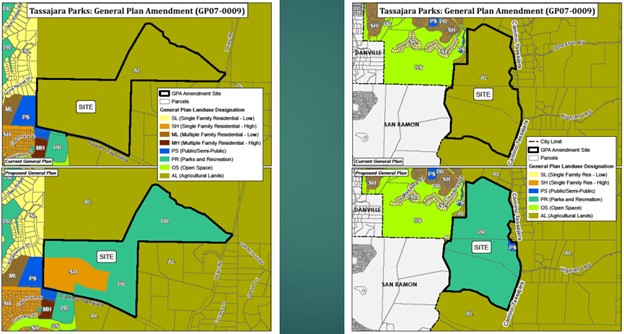
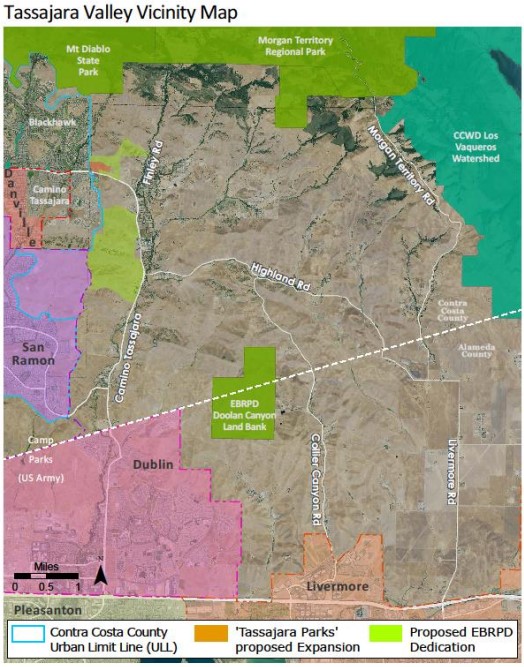
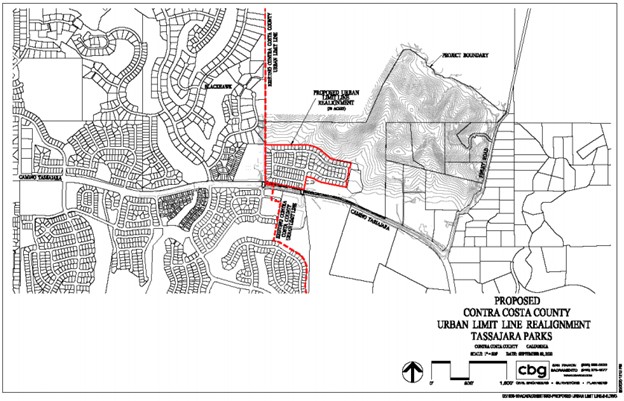

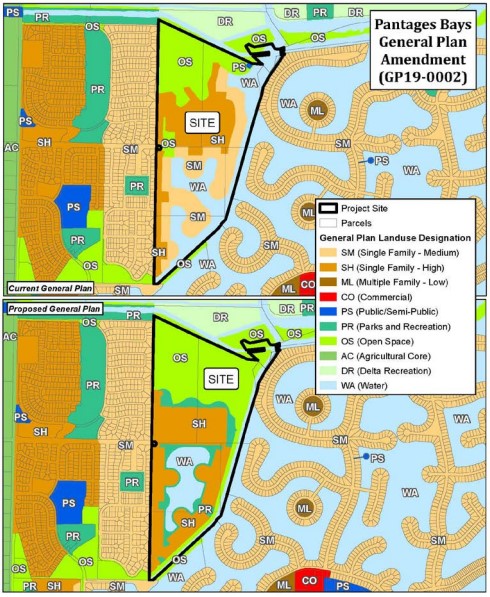



 Devastating and deadly wildfires have blazed across our state last year. With over 4.2 million acres burned, 2020 was the largest wildfires season recorded in California’s history. With extreme hot and dry weather this year, wildfire activity may be more widespread, potentially putting even more people in danger. Congressman Jerry McNerney (CA-09) will be hosting a virtual town hall on Thursday, July 15th from 6:00 PM to 7:00 PM to discuss what you can expect this season and answer questions on how you and our community can prepare and stay safe. He will be joined by representatives from the California Office of Emergency Services (Cal OES) and East Contra Costa Fire Protection District, and the Federal Communications Commission (FCC).
Devastating and deadly wildfires have blazed across our state last year. With over 4.2 million acres burned, 2020 was the largest wildfires season recorded in California’s history. With extreme hot and dry weather this year, wildfire activity may be more widespread, potentially putting even more people in danger. Congressman Jerry McNerney (CA-09) will be hosting a virtual town hall on Thursday, July 15th from 6:00 PM to 7:00 PM to discuss what you can expect this season and answer questions on how you and our community can prepare and stay safe. He will be joined by representatives from the California Office of Emergency Services (Cal OES) and East Contra Costa Fire Protection District, and the Federal Communications Commission (FCC). What:
What:  When:
When: 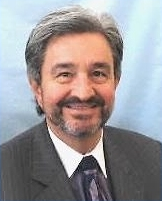
 With electric transmission lines from Oregon still unreliable due to the explosive Bootleg Fire and continued high temperatures across the West resulting in increased demand for electricity, the California Independent System Operator (ISO) issued a statewide Flex Alert for Monday, July 12 to help stabilize the state’s electric grid and deal with uncertainty created by the extraordinary conditions.
With electric transmission lines from Oregon still unreliable due to the explosive Bootleg Fire and continued high temperatures across the West resulting in increased demand for electricity, the California Independent System Operator (ISO) issued a statewide Flex Alert for Monday, July 12 to help stabilize the state’s electric grid and deal with uncertainty created by the extraordinary conditions.











